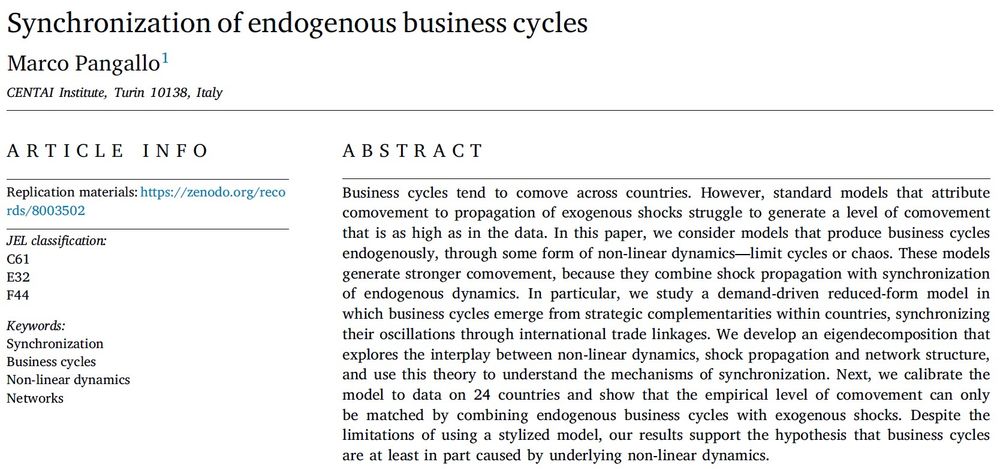With Anton Pichler and @maria-drc.bsky.social we got a grant to model the well-being impacts of natural disasters beyond standard economic measures.
We are looking for a 3-year PhD student and 2-year postdoc, deadline 15/01.
More info 👇
1/8

With Anton Pichler and @maria-drc.bsky.social we got a grant to model the well-being impacts of natural disasters beyond standard economic measures.
We are looking for a 3-year PhD student and 2-year postdoc, deadline 15/01.
More info 👇
1/8




New paper in JEBO: authors.elsevier.com/a/1kB5Vc24b7...
🧵👇

New paper in JEBO: authors.elsevier.com/a/1kB5Vc24b7...
🧵👇
@unito
. Here's an overview, and at the end I'll link to course materials - feedback welcome! 1/7

@unito
. Here's an overview, and at the end I'll link to course materials - feedback welcome! 1/7











